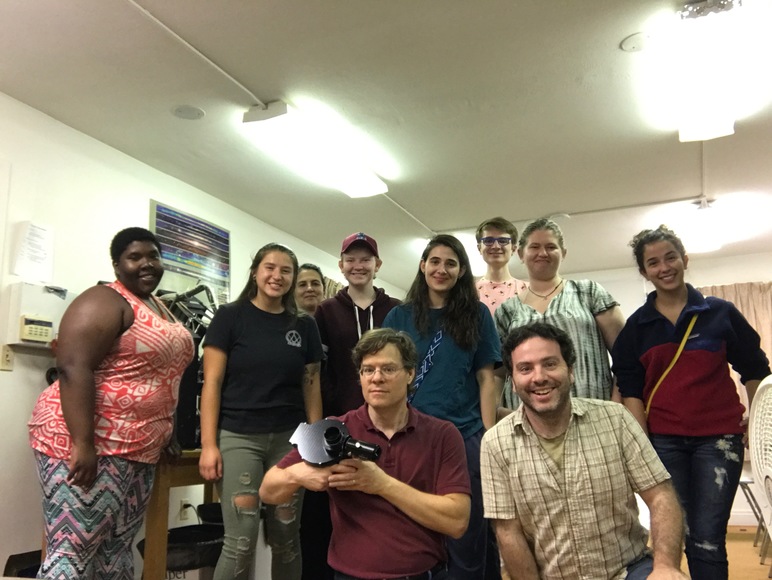
On the night of Jul 17/18 2018, from about 10:55 PM until 3:46 -- not quite dawn, as clouds came in -- through mostly clear skies I acquired a set of observations of the likely black-hole system MAXIJ1820+070, (also known as ASASSN-18ey ).
Tonight's late start of measurements was due to a visit from some REU students.
RIT runs several REU (Research Experiences for Undergraduates) programs over the summer. One of them, Research Experiences for Undergraduates (REU) in Multi-messenger Astrophysics , is being led by Josh Faber. He brought the students and an interpreter to the Observatory this evening so that they could get a hands-on experience in the field.
We used the 12-inch telescope to look at the Moon, Venus, and Jupiter. The pictures below were taken by members of the group, simply by holding a cell-phone camera up to the eyepiece.
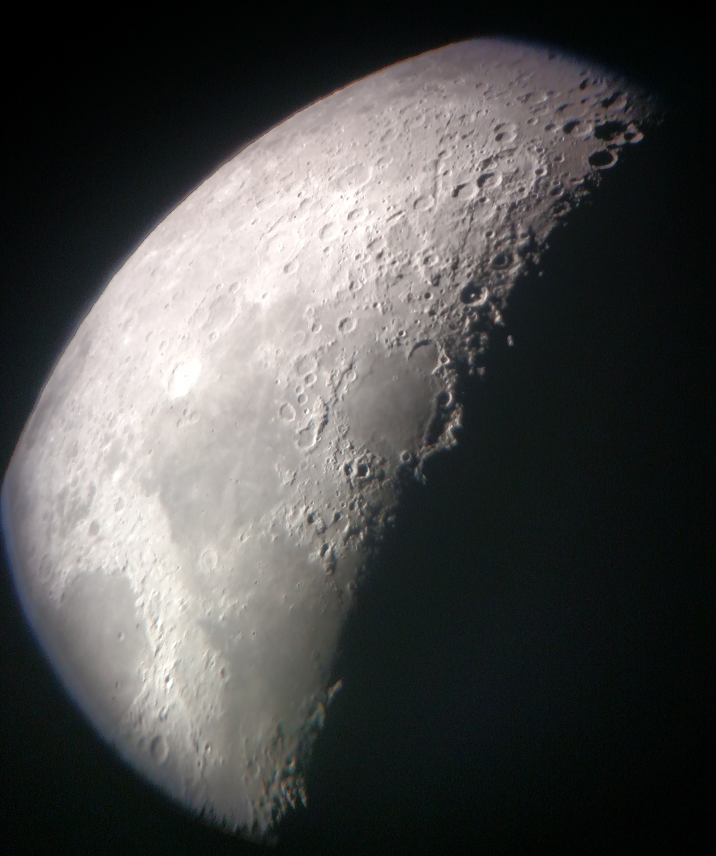
The picture below shows (left to right) Ganymede, Io, Jupiter, Europa, and Callisto.
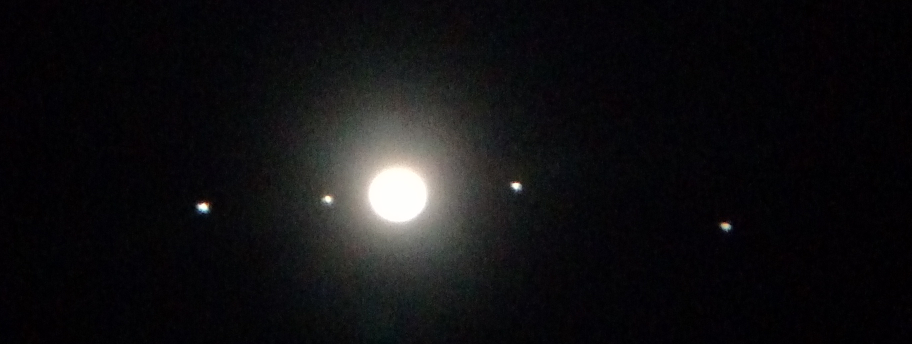
The main setup was:
Notes from the night:
This optical and X-ray and radio transient is likely a black hole accreting material at a higher-than-usual rate. It has been the subject of many observers over the past few months -- see the trail of telegrams that include
The object is located at
RA = 18:20:21.9 Dec = +07:11:07.3
A chart of the field is shown below. The size of the chart is about 22 by 18 arcminutes.
I've marked the location of several comparison stars, which also appear in light curves below. Stars C, D, and E are mentioned by the Tomoe Gozen team in ATel 11426, but all three are rather red, with (B-V) ranging from 1.14 to 1.37. Star B is one of the bluest nearby bright stars, with (B-V) = 0.52.
star UCAC4 B V ---------------------------------------------------- B 486-079513 12.975 12.454 C 486-079608 13.968 12.830 D 486-079523 14.637 13.272 E 487-077858 14.637 13.272 ----------------------------------------------------
I ran the camera at -15 C. Nothing out of the ordinary.

The sky value shows clouds early, and then clouds late, causing me to end before dawn.

Here's a record of the telescope's drift. With the guider, there's no long-term drift in RA, but a slow drift in Dec remains.
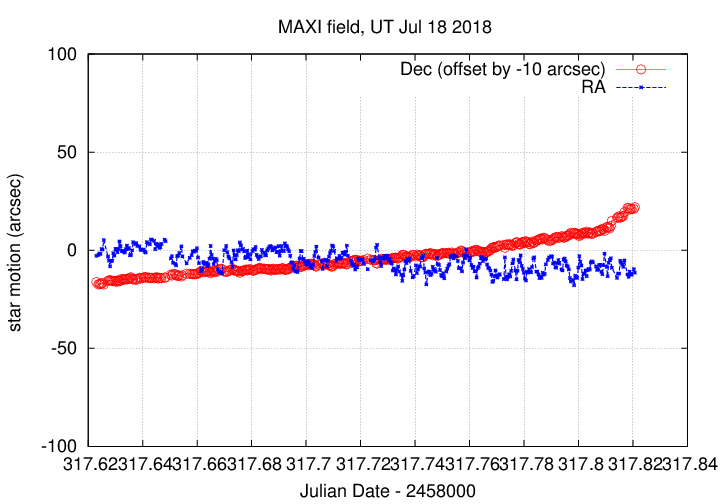
The number of objects detected -- I required 50 objects for an image to be included in the ensemble.
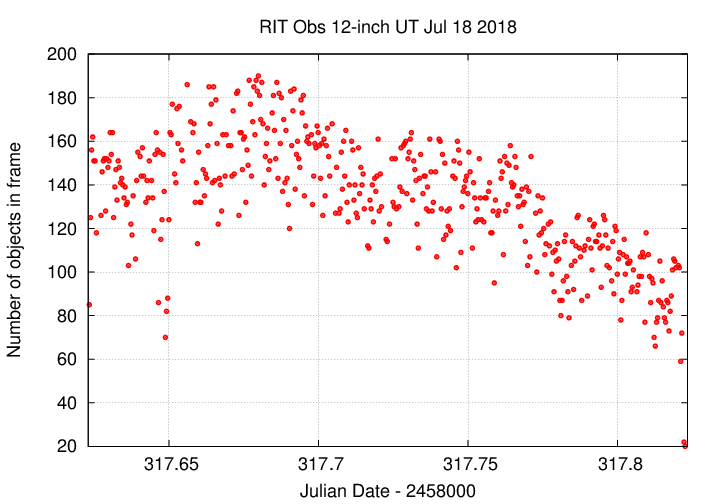
I used an aperture with radius 5.0 pixels.

I discarded images which had obvious trailed stellar images, using a threshold of "round > -0.40". (60 of the 523 raw images). I also removed all images with an image adjustment (zero-point) value more than 0.60 mag above the baseline, removing another 10 images. I discarded 6 more images as well.
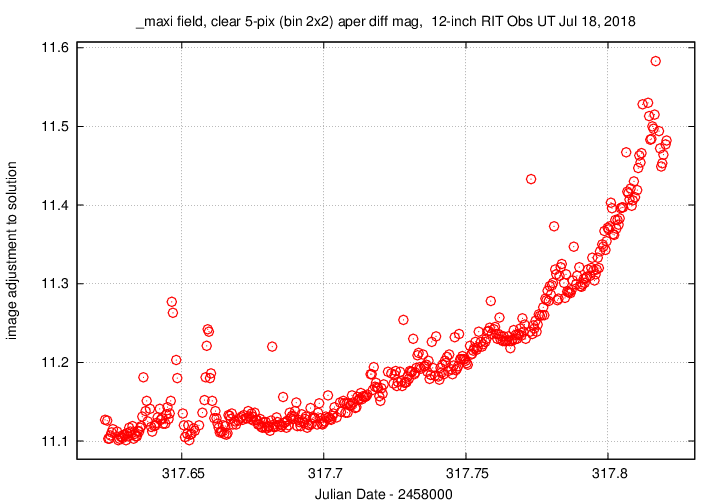
Using aperture photometry with a radius of 5 pixels (binned 2x2, each pixel is 1.34 arcsec, so a radius of 6.7 arcsec), I measured the instrumental magnitudes of a number of reference stars and the target. Following the procedures outlined by Kent Honeycutt's article on inhomogeneous ensemble photometry, I used all stars available in each image to define a reference frame, and measured each star against this frame.
Sigma-vs-mag plots show that the floor was about 0.007 mag overall, which is not bad. I marked star "A" as variable in the ensemble, as it was slightly saturated. The outlier around instrumental magnitude 2.1 is MAXI J1820+070. Note that star "B" has a larger-than-normal scatter due to its blue color and the second-order extinction at high airmass near the end of the run.
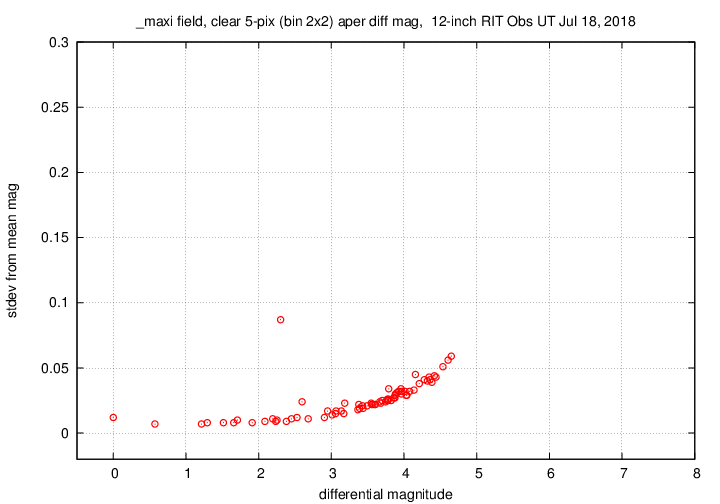
Here are light curves of the variable and the field stars. Note the change in the blue-ish star "B" due to second-order extinction at the end of the run.
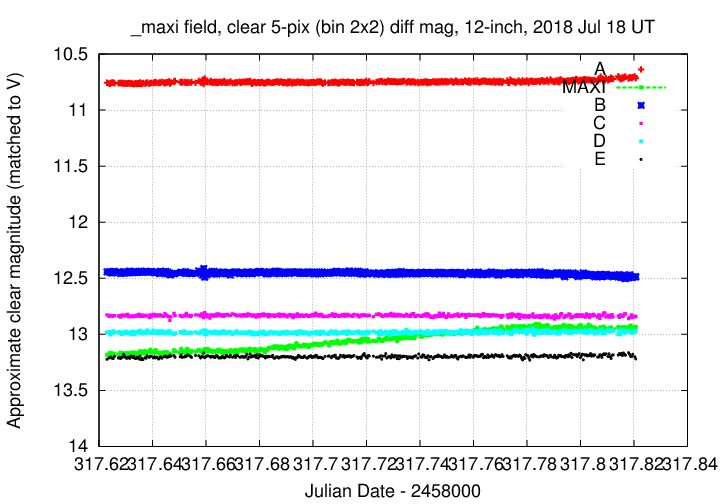
I used the UCAC value for the V-band magnitude of star "B" = UCAC4 486-079513 to shift the ensemble magnitudes to the standard V-band scale -- but remember that these are UNFILTERED measurements.
Here's a closeup on the variable. I'll connect the dots to make its behavior a bit easier to see.
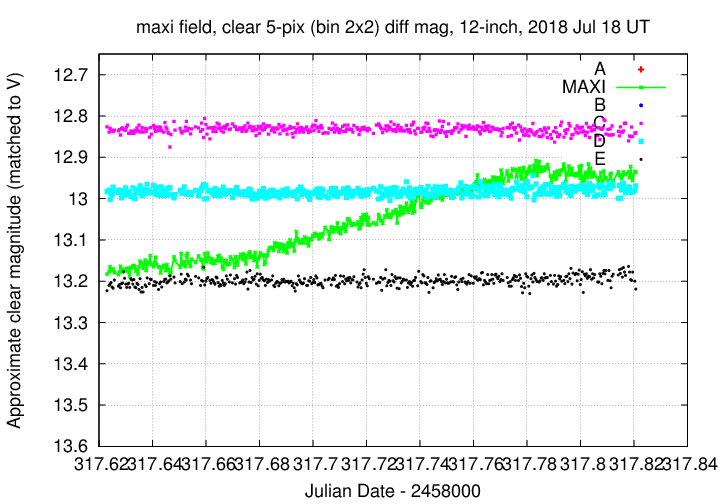
You can download my measurements below. A copy of the header of the file is shown to explain the format.
# Measurements of MAXIJ1820+070 made at RIT Obs, UT 2018 Jul 18, # in good conditions, # by Michael Richmond, # using Meade 12-inch LX200 and ATIK 11000. # Exposures 25 seconds long, no filter. # Tabulated times are midexposure (FITS header time - half exposure length) # and accurate only to +/- 1 second (??). # 'mag' is a differential magnitude based on ensemble photometry # using a circular aperture of radius 5 pix = 6.6 arcseconds. # which has been shifted so UCAC4 486-079513 has mag=12.454 # which is its V-band magnitude according to UCAC4. # # UT_day JD HJD mag uncert Jul18.12300 2458317.62300 2458317.62777 13.183 0.011 Jul18.12376 2458317.62376 2458317.62853 13.177 0.011 Jul18.12414 2458317.62414 2458317.62891 13.165 0.011
Last modified 7/18/2018 by MWR.